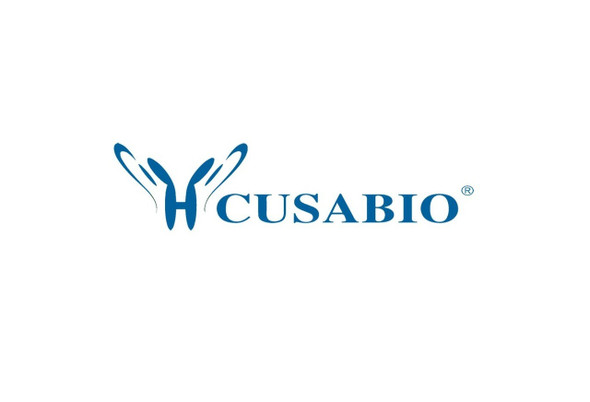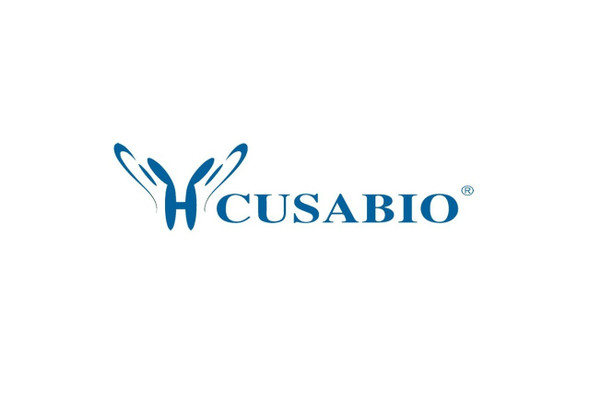Cusabio Human Recombinants
Recombinant Human Phosphatidylcholine-sterol acyltransferase (LCAT), partial | CSB-RP113694h
- SKU:
- CSB-RP113694h
- Availability:
- 13 - 23 Working Days
Description
Recombinant Human Phosphatidylcholine-sterol acyltransferase (LCAT), partial | CSB-RP113694h | Cusabio
Alternative Name(s): Lecithin-cholesterol acyltransferasePhospholipid-cholesterol acyltransferase
Gene Names: LCAT
Research Areas: Metabolism
Organism: Homo sapiens (Human)
AA Sequence: FWLLNVLFPPHTTPKAELSNHTRPVILVPGCLGNQLEAKLDKPDVVNWMCYRKTEDFFTIWLDLNMFLPLGVDCWIDNTRVVYNRSSGLVSNAPGVQIRVPGFGKTYSVEYLDSSKLAGYLHTLVQNLVNNGYVRDETVRAAPYDWRLEPGQQEEYYRKLAGLVEEMHAAYGKPVFLIGHSLGCLHLLYFLLRQPQAWKDRFIDGFISLGAPWGGSIKPMLVLASGDNQGIPIMSSIKLKEEQRITTTSPWMFPSRMAWPEDHVFISTPSFNYTGRDFQRFFADLHFEEGWYMWLQSRDLLAGLPAPGVEVYCLYGVGLPTPRTYIYDHGFPYTDPVGVLYEDGDDTVATRSTELCGLWQGRQPQPVHLLPLHGIQHLNMVFSNLTLEHINAILLGAYRQGPPASPTAS
Source: E.coli
Tag Info: N-terminal 6xHis-tagged
Expression Region: 25-433aa
Sequence Info: Partial
MW: 50.3 kDa
Purity: Greater than 90% as determined by SDS-PAGE.
Relevance: Central enzyme in the Extracellular domain metabolism of plasma lipoproteins. Synthesized mainly in the liver and secreted into plasma where it converts cholesterol and phosphatidylcholines (lecithins) to cholesteryl esters and lysophosphatidylcholines on the surface of high and low density lipoproteins (HDLs and LDLs). The cholesterol ester is then transported back to the liver. Has a preference for plasma 16:0-18:2 or 18:O-18:2 phosphatidylcholines. Also produced in the brain by primary astrocytes, and esterifies free cholesterol on nascent APOE-containing lipoproteins secreted from glia and influences cerebral spinal fluid (CSF) APOE- and APOA1 levels. Together with APOE and the cholesterol transporter ABCA1, plays a key role in the maturation of glial-derived, nascent lipoproteins. Required for rodeling high-density lipoprotein particles into their spherical forms.
Reference: Human lecithin-cholesterol acyltransferase gene complete gene sequence and sites of expression.McLean J., Wion K., Drayna D., Fielding C., Lawn R.Nucleic Acids Res. 14:9397-9406(1986)
Storage: The shelf life is related to many factors, storage state, buffer ingredients, storage temperature and the stability of the protein itself. Generally, the shelf life of liquid form is 6 months at -20?/-80?. The shelf life of lyophilized form is 12 months at -20?/-80?.
Notes: Repeated freezing and thawing is not recommended. Store working aliquots at 4? for up to one week.
Function: Central enzyme in the extracellular metabolism of plasma lipoproteins. Synthesized mainly in the liver and secreted into plasma where it converts cholesterol and phosphatidylcholines (lecithins) to cholesteryl esters and lysophosphatidylcholines on the surface of high and low density lipoproteins (HDLs and LDLs)
Involvement in disease: Lecithin-cholesterol acyltransferase deficiency (LCATD); Fish-eye disease (FED)
Subcellular Location: Secreted
Protein Families: AB hydrolase superfamily, Lipase family
Tissue Specificity: Detected in blood plasma (PubMed:3458198, PubMed:8820107, PubMed:10222237). Detected in cerebral spinal fluid (at protein level) (PubMed:10222237). Detected in liver (PubMed:3797244, PubMed:3458198). Expressed mainly in brain, liver and testes.
Paythway: LipidsandInflammation inAtherogenesis
Form: Liquid or Lyophilized powder
Buffer: If the delivery form is liquid, the default storage buffer is Tris/PBS-based buffer, 5%-50% glycerol. If the delivery form is lyophilized powder, the buffer before lyophilization is Tris/PBS-based buffer, 6% Trehalose, pH 8.0.
Reconstitution: We recommend that this vial be briefly centrifuged prior to opening to bring the contents to the bottom. Please reconstitute protein in deionized sterile water to a concentration of 0.1-1.0 mg/mL.We recommend to add 5-50% of glycerol (final concentration) and aliquot for long-term storage at -20?/-80?. Our default final concentration of glycerol is 50%. Customers could use it as reference.
Uniprot ID: P04180
HGNC Database Link: HGNC
UniGene Database Link: UniGene
KEGG Database Link: KEGG
STRING Database Link: STRING
OMIM Database Link: OMIM









